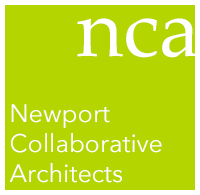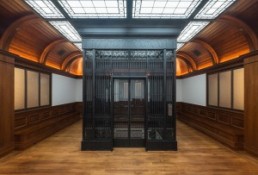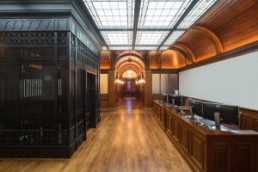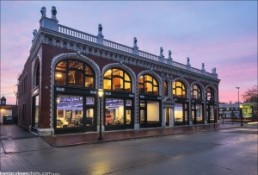The American Institute of Steel Construction awarded the Audrain Building in Newport, RI a National Certificate of Recognition in commemoration of the role that structural steel played in the project’s success.
Bruce Price designed the Audrain Building in 1903. The 16,000 square-foot commercial building represents one of four Gilded Age buildings that form an architecturally significant block on Bellevue Avenue. The three adjoining buildings include the Travers Block designed by Richard Morris Hunt; the Newport Casino designed by McKim, Mead, and White; and the King Block designed by Perkins and Betton.
In November 2013, the client purchased the Audrain Building and enlisted NCA to transform the second story offices into his company headquarters. The project was completed in nine short months. In February 2014, the client also enlisted NCA to transform the first floor into a museum that would showcase his automobile collection. Completed in six months, the museum project was on a parallel track to designing the headquarters on the second floor.
To replicate the missing terra-cotta ornamentation, rooftop balustrade and lion sculptures NCA relied on historic photographs. Structural engineering was required to bring the building up to code to accept the additional weight of the new ornamentation. All of the windows were replaced with impact resistant glass. The South elevation was originally hidden by the neighboring Ocean House Hotel. The hotel was destroyed by fire in the 19th century, which caused the unadorned South elevation to be exposed. The design team upgraded the sparse elevation with a large two story arched opening, three double-hung windows, and a new fire stair with a powder coated steel balustrade. The local Historic District required that the new South façade details be discernible to the observer by the simplification of replicated detail.
For the office interiors, the client wished to emulate an early 20th century club. The bold concept called for reconfiguring the layout to accommodate a new marble lobby, custom steel caged elevator, barrel vaulted ceiling, six private offices, support-staff area, conference room, kitchen, restrooms and a 20’x20’ leaded glass skylight. The fixture incorporates LED technology with filters to mimic the look of natural daylight streaming through a traditional skylight.
The museum project entailed removing all of the existing bearing walls, shoring the structure, reinforcing the floor to accommodate triple load bearing decking, and installing powder coated steel, fire-rated trusses. All of the windows were replaced with impact resistant glass. The South elevation was upgraded with a large two-story arched opening that was custom fit to allow cars to access the building. The museum’s interiors feature state-of-the-art LED/RGB lighting for the structural steel trusses and track LED lighting for the cars. The program also called for public restrooms. NCA used stainless steel to create custom dividers and counters.



